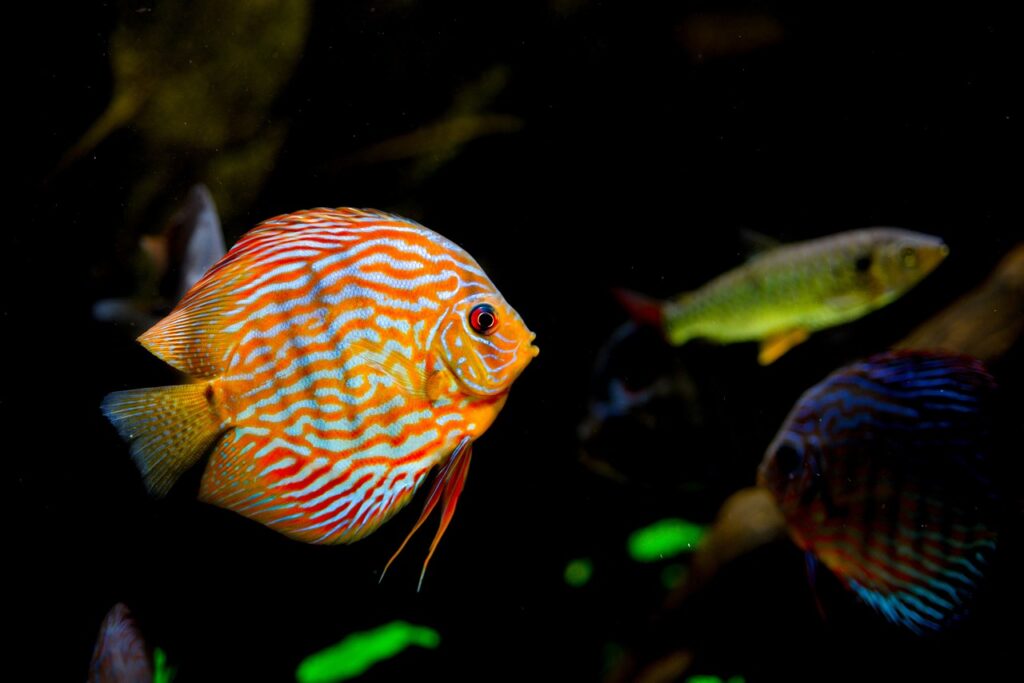Taking care of aquarium fish is crucial to ensure their well-being and to create a serene and beautiful living environment.
In this comprehensive guide, we will discuss the essential steps you need to follow to provide proper care for your fish and maintain a healthy and flourishing aquarium.

Introduction
Discover the secrets to keeping your aquarium fish happy and healthy with our guide on taking care of aquarium fish.
From conditioning the water to creating a thriving aquatic ecosystem, we’ve got you covered.
Maintaining a fish tank or aquarium can be a fulfilling endeavor, but it demands regular care and attention.
Regardless of the size of your tank, it is essential to grasp the fundamental steps involved in aquarium maintenance.
These steps are vital for the well-being of your fish and the overall longevity of your aquatic ecosystem.
Properly Condition Your Water

To ensure the well-being of your aquarium fish, the initial step in their care is to appropriately condition the water.
Tap water typically contains chlorine and chloramines, both of which can be detrimental to fish.
By utilizing a water conditioner specially formulated for aquariums, you can effectively eliminate these harmful substances and create a safe environment for your fish.
Cycle the Tank Before Adding Fish

Before introducing fish to your aquarium, it’s important to cycle the tank.
This process establishes a healthy biological filter that breaks down toxic ammonia into less harmful substances.
Beneficial bacteria play a vital role in this process by colonizing the filter media.
Allow the tank to cycle for a few weeks before adding fish to ensure a stable and safe environment.
Acclimate Your Fish to the Water

When bringing home new fish, it’s crucial to acclimate them to their new environment.
This helps them adjust to the temperature and pH of the aquarium water gradually.
Float the fish, while still in their bag, in the aquarium for about 15-20 minutes.
Then, add small amounts of tank water to the bag every few minutes. Finally, release the fish into the aquarium, allowing them to swim out on their own.
Test and Monitor Water Parameters
Regularly testing and monitoring water parameters is essential for maintaining a healthy aquarium.
Maintaining stable water conditions is essential for the health of your aquarium fish. Utilize test kits to regularly monitor pH levels, ammonia, nitrite, and nitrate levels.
It is crucial to keep the pH within the optimal range for your specific fish species and ensure that ammonia and nitrite levels are either zero or within acceptable ranges.
By diligently managing these parameters, you can provide a favorable aquatic environment for your fish.
Float Fish in Their Bag
To minimize stress and prevent shock when introducing new fish to the aquarium, it’s advisable to float them in their bag.
Implementing the floatation method facilitates a gradual adjustment of water temperature inside the bag to match that of the tank.
Once the temperatures are equalized, carefully release the fish into the tank, allowing them ample time to acclimate to their new environment.
Choose the Right Size for Your Tank

Selecting the appropriate tank size is crucial for your fish’s well-being. Different fish species have different space requirements.
Ensuring an adequate amount of space for your aquarium fish is crucial for allowing them to express their natural behaviors and minimizing stress.
It is important to avoid overcrowding, as it can result in territorial conflicts among the fish and compromise the overall water quality.
Maintain pH Balance and Other Chemical Levels
Maintaining proper pH balance and chemical levels in your aquarium is essential for the health of your fish.
Research the pH preferences of your fish species and use appropriate buffers or conditioners to adjust the pH if needed.
Regularly monitor and adjust chemical levels to ensure a stable and suitable environment for your fish.
Perform Regular Water Changes
Maintaining optimal water quality in your aquarium necessitates regular water changes.
These changes are vital in eliminating accumulated waste, excess nutrients, and toxins that can be detrimental to your fish.
The frequency and volume of water changes depend on factors such as tank size and the number of fish.
As a general rule, aim to perform weekly water changes of approximately 20-30% of the tank’s volume.
This practice ensures stability in water parameters and fosters a thriving and healthy environment for your aquatic companions.
Avoid Overfeeding Your Fish
Overfeeding is a common mistake that can lead to poor water quality and health issues in fish.
Follow feeding guidelines specific to your fish species and monitor their appetite and overall health.
Remember that fish may beg for food even when they are not hungry.
Avoid overfeeding to maintain good water quality and prevent obesity and related health problems.
Clean Your Filter Media If the Filter Is Close to Overflowing
The filter in your aquarium plays a vital role in maintaining water quality.
If you notice that your filter is close to overflowing or the flow rate has significantly decreased, it’s time to clean the filter media.
Accumulated debris can hinder the filtration process and negatively impact water quality.
Follow the manufacturer’s instructions to clean the filter media properly, ensuring that you don’t disrupt the beneficial bacteria colonies.
Pick Compatible Fish Species
When selecting fish for your aquarium, it’s crucial to choose compatible species. Research the behavior, size, and habitat requirements of different fish species.
Avoid combining aggressive and peaceful fish or species that have conflicting environmental needs.
Creating a harmonious community with compatible fish will reduce stress and promote a peaceful and balanced environment.
